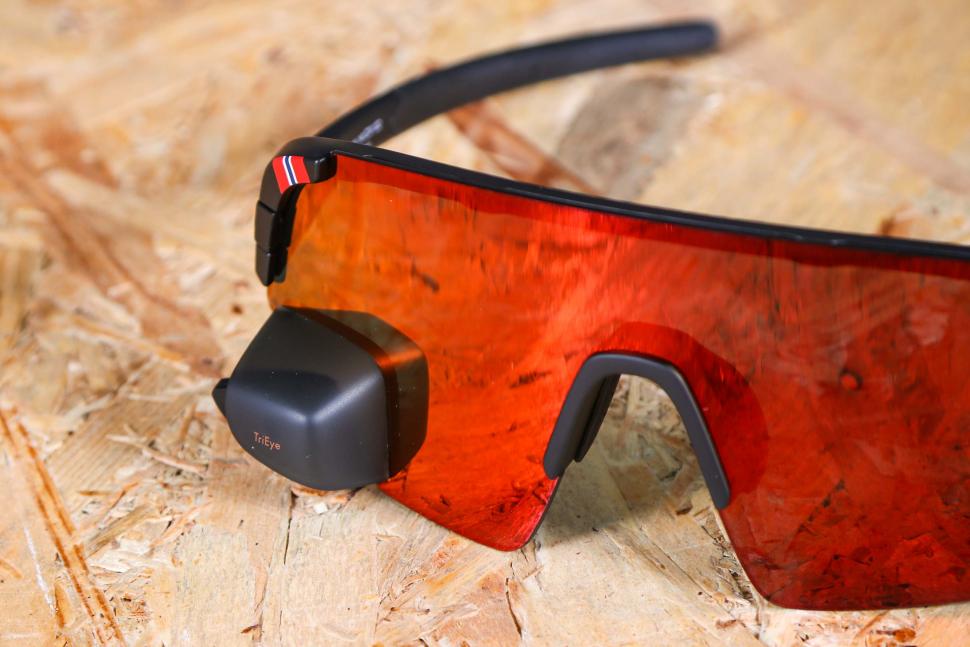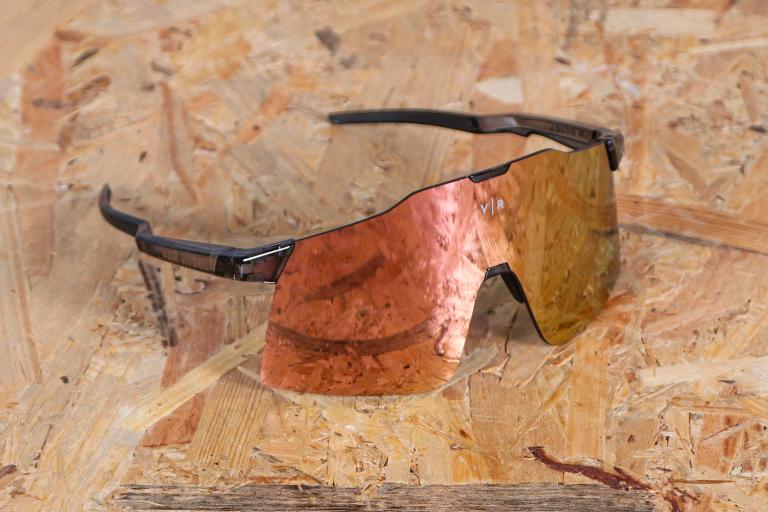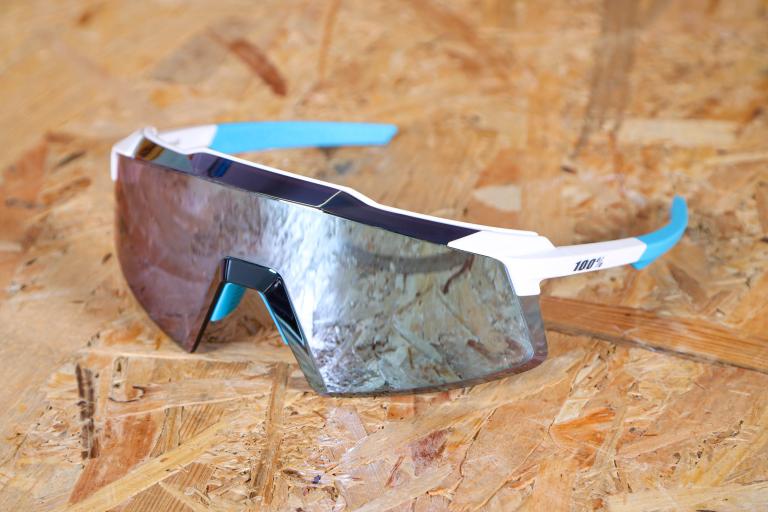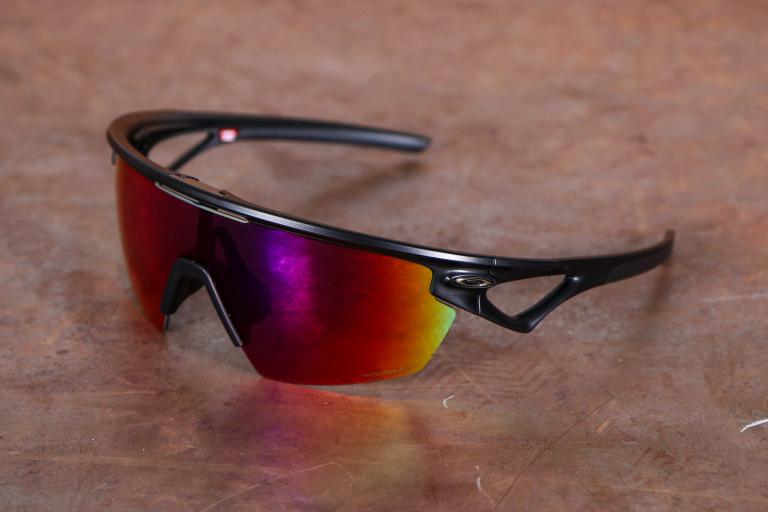- News
- Reviews
- Bikes
- Accessories
- Accessories - misc
- Computer mounts
- Bags
- Bar ends
- Bike bags & cases
- Bottle cages
- Bottles
- Cameras
- Car racks
- Child seats
- Computers
- Glasses
- GPS units
- Helmets
- Lights - front
- Lights - rear
- Lights - sets
- Locks
- Mirrors
- Mudguards
- Racks
- Pumps & CO2 inflators
- Puncture kits
- Reflectives
- Smart watches
- Stands and racks
- Trailers
- Clothing
- Components
- Bar tape & grips
- Bottom brackets
- Brake & gear cables
- Brake & STI levers
- Brake pads & spares
- Brakes
- Cassettes & freewheels
- Chains
- Chainsets & chainrings
- Derailleurs - front
- Derailleurs - rear
- Forks
- Gear levers & shifters
- Groupsets
- Handlebars & extensions
- Headsets
- Hubs
- Inner tubes
- Pedals
- Quick releases & skewers
- Saddles
- Seatposts
- Stems
- Wheels
- Tyres
- Health, fitness and nutrition
- Tools and workshop
- Miscellaneous
- Cross country mountain bikes
- Tubeless valves
- Buyers Guides
- Features
- Forum
- Recommends
- Podcast
review
 2023 TriEye View Sport Revo Max.jpg
2023 TriEye View Sport Revo Max.jpg£86.00
VERDICT:
Good riding glasses with a built-in mirror that can be useful
Mirror works pretty well
Glasses are well constructed and comfortable
Lenses are good
You still have to look over your shoulder (a bit)
Changing position on bike changes the view of the mirror
Weight:
34g
Contact:
At road.cc every product is thoroughly tested for as long as it takes to get a proper insight into how well it works. Our reviewers are experienced cyclists that we trust to be objective. While we strive to ensure that opinions expressed are backed up by facts, reviews are by their nature an informed opinion, not a definitive verdict. We don't intentionally try to break anything (except locks) but we do try to look for weak points in any design. The overall score is not just an average of the other scores: it reflects both a product's function and value – with value determined by how a product compares with items of similar spec, quality, and price.
What the road.cc scores meanGood scores are more common than bad, because fortunately good products are more common than bad.
- Exceptional
- Excellent
- Very Good
- Good
- Quite good
- Average
- Not so good
- Poor
- Bad
- Appalling
Being able to see behind you is useful. But having a mirror on your bars or – heaven forfend! – the side of your helmet is a bit dorky. The TriEye View Sport Revo Max glasses incorporate a small mirror in one (or both) sides of the lens that allows you to quickly check behind you when you're riding. It works pretty well, a lot of the time, and it's built into a pair of shades that'd be decent value even without the mirror tech.
If you're not so bothered about the mirror, check out our guide to the best cycling sunglasses for more options.
> Buy now: TriEye View Sport Revo Max glasses for £86 from TriEye
First off, the glasses themselves. They're an open-frame design using a TR90 thermoplastic frame with a fully adjustable rubber bridge and rubber inserts on the arms. The lens is polycarbonate, offers full UV400 protection and is available in three finishes. I tested the red one, which TriEye claims 'enhances your vision and makes your surroundings look vibrant and dynamic'.
And it's good. It's not quite an Oakley Prizm lens but it does a good job in full sun, and is versatile enough to work into fading light. The clarity is very good, and it copes pretty well with mixed light and shade, for example moving in and out of tree cover on a sunny day.
Basically it's a thumbs-up for the glasses: if I were reviewing them without the mirror, I'd be saying that they're good. They're comfortable and they offer good coverage and protection. You even get a decent hard case and a microfibre soft case thrown in.
Mirror
Built into the right-hand lens (you can have it on either side, or even on both sides) is the mirror. This is the third iteration of TriEye's mirror after launching with a successful kickstarter campaign in 2018.
It's about 22mm by 18mm at its deepest (it tapers towards the edge of the lens) and it sits in a smoked plastic housing that's attached to the lens and stands proud of it by about 15mm. It's on an articulated joint, which means you can adjust the angle within the housing to suit your riding position.
Getting the right position for the mirror is trial and error; you need it to be facing slightly away from you (so you're not just looking at the side of your face) and then you have to tilt your head slightly to get a view of what's coming up behind you.
When TriEye says that you can 'see what's behind you without taking your eyes off the road ahead', I'd say that's not entirely true; you still need to move your head and concentrate on the mirror, and if you do that you're not looking ahead. But it's a much more minor movement than a standard look behind, and that means you're less likely to deviate from your line.
I was reasonably impressed with the mirror, and the view it gives you. Certainly there's a learning curve, and it takes a few rides to get to grips with the movements you need to make to get a rear view, but once you've dialled in the muscle memory it's a useful tool, and much quicker than making a full check over your shoulder. It's easy to check where your ride buddies are, or have a quick check for traffic before you move out for a right turn.
The image in the mirror is very clear, and because it's attached to your head it's also very steady; one of the issues with bike-mounted mirrors is that the image can be jumpy as the bike hits lumps and bumps in the road, and that's not an issue here.
Limitations
The mirror system has its limitations. For one thing the optimal position of the mirror is very dependent on your riding position. If you spend the majority of your time in one position then that's fine; I tend to move a lot from the drops to the hoods during a ride, and you can either have a mirror position that works okay but not perfectly for both, or is really good for one position and not so great for the other.
The gradient of the road, and where it sits behind you (curving away to the left or the right, for example) also affects the movement you need to make to get a clear view.
On the plus side, the advantage over a static mirror on your bike is that you are able to get a rear view in most situations, even if sometimes it takes a little longer to get it dialled in. The more aggressive your position, the more you're going to be seeing your shoulders and not the road behind you, so if you have a very aggressive racing position on the bike, or you're using time trial extensions, it will become harder to get a clear view.
I was worried that the mirror would be intrusive in my frontal view, but I didn't find that to be the case. Obviously it's there and blocking part of your field of view, but I never found it to be an issue when I was on a ride. The mirror has been slimmed down from the first iteration of the glasses to be less intrusive, and I think TriEye has got it just about right with this version. The mirror is big enough to be useful and small enough to not be in the way.
When I was out riding with the TriEye glasses I found I used the mirror a fair bit, but not exclusively. There were times when the particular combination of my riding position and the topography of the road meant I couldn't get a clear view, and I still found that when I thought it really mattered I'd be looking over my shoulder to double check.
When taking the glasses off, or stowing them in your helmet, you need to be careful not to knock the mirror out of whack, and to get it positioned correctly again you really need to be in position on the bike, so it's easier when you're moving and harder at the side of the road. But the bottom line is that the mirror does add something, and it's built into a pair of riding glasses that are very good, so even if you go out for a ride and don't use it at all you're not going to feel like your specs are a compromise.
Value and conclusion
Overall, the TriEye View Sport Revo Max glasses get an ever-so-slightly-cautious thumbs-up from me. The mirror does enough to be a useful addition, and it's built into a pair of glasses that are comfortable, with good optics.
At £87 they're decent value too: we've recently reviewed glasses from the likes of Magicshine and Galibier that offer great performance for less than £50, but you'd hardly call the TriEyes expensive given the extra mirror tech you're getting built in.
The only other 'see behind you' glasses we've reviewed thus far are the Hindsight Edge Sports which are more than twice as much and didn't fare that well, although I'm currently reviewing the next generation of those sunnies, so look out for that review soon.
Verdict
Good riding glasses with a built-in mirror that can be useful
road.cc test report
Make and model: TriEye View Sport Revo Max
Size tested: Medium
Tell us what the product is for and who it's aimed at. What do the manufacturers say about it? How does that compare to your own feelings about it?
TriEye says: "Ride with confidence and see everything that's behind you with TriEye sports eyewear. Our innovative design features an integrated and adjustable rearview mirror, allowing you to keep your eyes on the road ahead while staying aware of your surroundings.
Experience the thrill of cycling with the peace of mind that comes from knowing what's behind you at all times. TriEye sports eyewear is designed with an integrated and adjustable rearview mirror, allowing you to see what's behind you without taking your eyes off the road ahead.
Our frames are made with TR90, a thermoplastic material that's known for its exceptional durability, flexibility, and lightweight properties. The frames are designed to contour your face comfortably and can easily bend under pressure for maximum comfort. The rubber tips provide added comfort and stability for a secure fit during your ride.
The Polycarbonate lenses of TriEye sports eyewear are lightweight, scratch-resistant, and fully UV-protected (UV400) with category 3 sun protection. The red lens coating adds a soft tint that enhances clarity while providing maximum protection against glare. The rich and deep colour of the lens enhances your vision and makes your surroundings look vibrant and dynamic."
Tell us some more about the technical aspects of the product?
From TriEye:
TriEye light frame (TR90), Lens with mirror, TriEye protective carry case, Microfiber pouch, Microfiber cloth and User manual
TriEye VIEW comes in two sizes, medium and small. The lens is a rather big panoramic lens which looks good on an average adult face, and to big on a small adult face. For that reason you can choose between the two sizes and there is a big overlap where both small and medium will fit well.
As a general role, medium size will fit all adult males with an average head/face size. Medium will also fit most females with an average head/face size but for most females small size is also an alternative.
If you have a head/face significantly smaller than average, small size is the safest choice. Note that the size of the lens also decide the angle between your eye and the mirror.
Rate the product for quality of construction:
9/10
Rate the product for performance:
7/10
Glasses are good, mirror is more useful than not.
Rate the product for durability:
7/10
No issues during testing.
Rate the product for weight (if applicable)
7/10
They're heavier than a non-mirror pair, but I didn't have any issues with them moving or slipping.
Rate the product for comfort (if applicable)
9/10
Really comfy and good bridge adjustment.
Rate the product for value:
6/10
You can have great sunnies without a mirror for less than £50, or more than £200. These are good sunnies with extra tech at a decent price.
Tell us how the product performed overall when used for its designed purpose
Pretty well: it's not a panacea but it's a nice-to-have.
Tell us what you particularly liked about the product
Mirror works pretty well, glasses are well constructed and comfortable, lenses are good.
Tell us what you particularly disliked about the product
You still have to look over your shoulder (a bit); changing position on bike changes the view of the mirror.
How does the price compare to that of similar products in the market, including ones recently tested on road.cc?
The only other look-behind-you specs we've reviewed are the Hindsight Edge Sport, which are considerably more expensive.
Did you enjoy using the product? Yes, in the main.
Would you consider buying the product? Maybe
Would you recommend the product to a friend? Maybe
Use this box to explain your overall score
Overall, good: the glasses are really nice, and the mirror is functional and a useful extra aid. They have their limitations, but they're one to look at.
About the tester
Age: 50
I usually ride: whatever I'm testing... My best bike is: Kinesis Tripster ATR, Merida Scultura, Dward Design fixed
I've been riding for: Over 20 years I ride: Every day I would class myself as: Expert
I regularly do the following types of riding: road racing, commuting, touring, club rides, general fitness riding, fixed/singlespeed, Mountain Bike Bog Snorkelling, track
Dave is a founding father of road.cc, having previously worked on Cycling Plus and What Mountain Bike magazines back in the day. He also writes about e-bikes for our sister publication ebiketips. He's won three mountain bike bog snorkelling World Championships, and races at the back of the third cats.
Latest Comments
- Dnnnnnn 3 sec ago
Having lived many years in London (and elsewhere), I can confirm that it's largely not a shithole. Nor is it particularly dangerous relative to its...
- JEMVisser 51 min 37 sec ago
Yes, higher is better. You ever seen a time trialist some 10-15 years ago? Low aero bars and stretched out. Now they are all riding in that high...
- Hirsute 1 hour 38 min ago
"If we can't park, we can't play and if we can't park, we can't grow."...
- KiwiMike 2 hours 15 min ago
Sorry, I left my metallurgy degree at the pub....
- eburtthebike 2 hours 53 min ago
Stick with it and remember that empty vessels make the most noise. Many of those people on social media won't even live there, they've just been...
- fukawitribe 3 hours 12 min ago
Fuck off
- Rendel Harris 4 hours 21 min ago
That was my reaction too on another thread but actually, as mdavidford pointed out, it's probably intended to mean "the experience of being...
- Hirsute 5 hours 42 min ago
Given he got the minimum for culpability/harm I don't see it that way.
- agp 6 hours 21 min ago
great to see this elitist BS soldiering along...
- OnYerBike 7 hours 25 min ago
Not suggesting that the hub design might not be flawed in general, but it seems pretty fanciful to imagine it would have affected the outcome of...





















Add new comment
4 comments
"But having a mirror on your bars or – heaven forfend! – the side of your helmet is a bit dorky."
Not as dorky as a "reviewer" cum PR-repeater making such an infantile comment, though, but, eh!? But I forget. Some believe cycling to be something about promenading clad with the latest fashionable stuff, in competition with the other promenaders for the lookit-me prize.
But I forget. Some believe cycling to be something about promenading clad with the latest fashionable stuff, in competition with the other promenaders for the lookit-me prize.
We olephart find it increasingly difficult to screw about on the saddle to look behind. Even those who can manage it are spending the critical 2 - 3 seconds not looking ahead, where the car loon will immediately appear as though transported down from an Enterprise. Mirrors are good, nay, essential for spotting rear ambush by car-loon. Do they work in this essential role? That's all that matters. Disregard the vacuous dork-accusers, says I.
But let us return to dorkiness. Is there anything more dorky than a cyclist with a fat polystyrene hat, 5 varieties of £500-a-time gubbins on their handlebars and a pair of loud-colour sunglasses matching a professional team jersey as worn by sleb cyclists far away? There is! One so adorned also riding the latest over-geared £7000 racey bike at 12.7 mph in 52x11! And not looking behind because too busy admiring themselves in the shop window reflections they pass.
In theory, a mirror on the classes seems like a good idea, but in reality, it just doesn't work. Having to move one's head in a way that actually allows for viewing rear traffic is a non-starter, not to mention much of the world needs the mirror on the left, not the right.
Purchasing the Garmin Varia cancelled all my plans to buy a mirror of any kind. The Varia is always looking for traffic from behind whereas a mirror only works when you're looking into it.
That's fine until the traffic is the same speed as you then it doesn't show.
Also the varia doesn't tell you how much you will be close passed by !
You can get neat bar end mirrors which don't look dorky.
Stupid product.